- Foreword,
This project was the Very first major sewing project I have undertook. Many mistakes may have been made. I have no claim that I am a seamster . Most of what I have learned has been through trial and error. The main reason for this article is to show that even a person with minimal sewing skills can complete an authentic looking garment. I apologize for not taking pictures during construction of the garment. I did not have a digital camera or access to one at that time.
- Introduction
We all have done it, a “Summer Project”. As the heat and humidity of summer drive us indoors, we seek new ways to entertain ourselves,(or torture). Nestled inside my air conditioned fortress, I undertook an interesting project. This is the story of one such project.
- The Beginning
Research-
Looking through the droves of posts here on the AC, I came to a conclusion. I wanted to stay away from the look that the “Richmond Depot” jacket had. As I attend mostly western reenactments, I feel that a RD jacket had been vastly overdone out west. I always was interested in the “Columbus Depot” and other deep south depots.
Looking through the approved vendors list and came across Wambaugh, White and Company. I was drawn to the Ross County four button CS jacket kit. I was interested in the history and application of this jacket.
The kit can be found at;
http://www.wwandcompany.com/4buttonkit.html
Purchasing -
Making sure that funding was available, I called Mr Wambaugh. I spoke to him for a good 30 minutes about the history behind the jacket and its construction. After I was satisfied with my choice, I placed my order. Within two or three day I had the package arrive at my doorstep. Being that I was traveling out of town I couldn't start the project then. I checked the box and laid everything out to get a scope of the task before me.
The fabric was an interesting to say the least. With no wrong or right side it was a challenge to know what side I needed to use. Pins are a wonderful thing to mark what side your using. I was impressed with the quality of the workmanship in the fabric kudos to Ben Tart.
- Measure Twice, Cut Once
The first step of the project was the pocket and pocket welt. I found this to be the most difficult part of the entire project. Either because of my lack of skill or not understanding what the directions implied. We all know the old saying “Measure twice, Cut once”. For me its “Measure Four times, Cut Once, Still get it wrong”. This was probably one of the biggest mistakes I made. I cut the pocket welt opening too large. This almost sidelined the project for good. Discouraged at my mistake I moved on. The next few steps went much easier.
-Smooth Sailing
The following steps I sailed right through with no difficulty. Running stitch and back stitch mostly. How bad is it when you have to look online to see how to do a running stitch? I will raise my hand to that one, better to admit your shortcomings that to be ignorant to them.
- Speed bump
At this point, I was a few weeks into the project. I had most of the facing pieces sewn together. Spending a few hours a week doing the project. School work took up most of my time. I came to a difficult and potentially important choice around this time. Do I follow the directions exactly, or do I follow what I feel like I should like it. The question was, do I finish the collar as specified with an overcast stitch? I do not know exactly how to describe the way I attached the two collar pieces. Best way is to say it is attached like how the facing pieces are attached to one another. Looking back I probably should have followed the directions but, THIS IS MY COAT. I used a construction method that was available at the time and both ways look pretty much the same.
This images shows the construction of the collar.
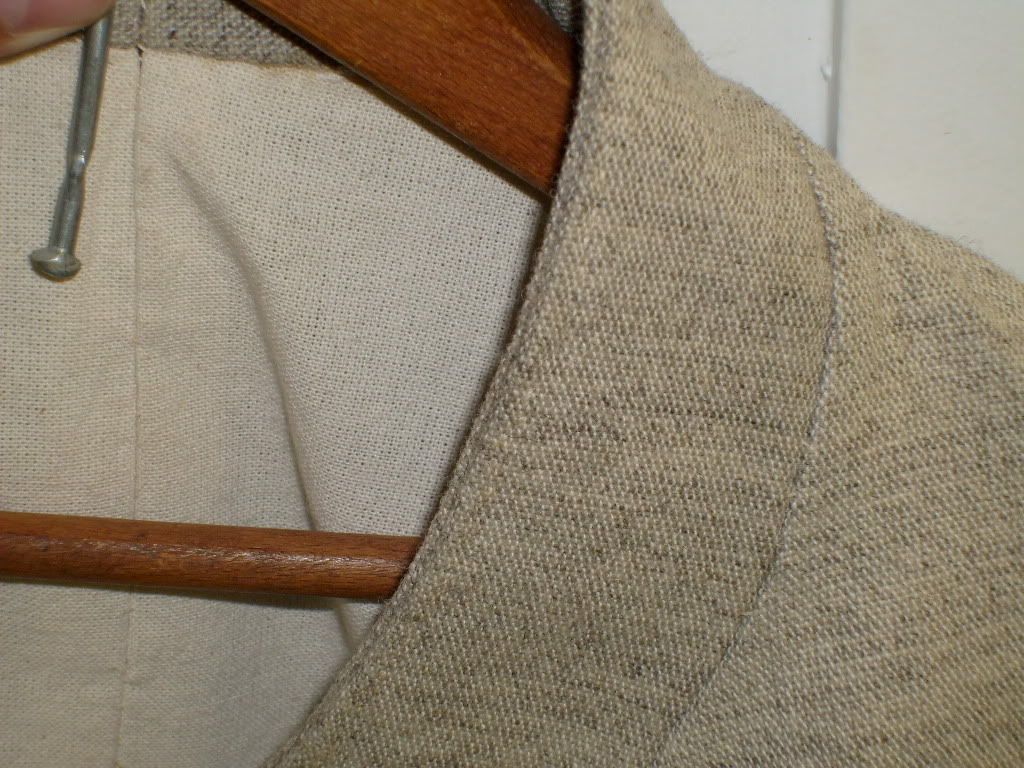
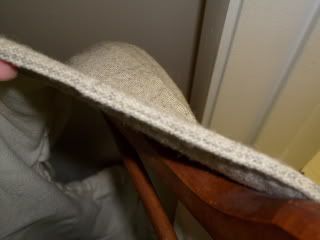
Few weeks had gone by before I finished attaching the lining to the body. At this point the jacket was taking shape. I could start to see the finished product. Sleeve construction went fast and without any major troubles. Attachment of the sleeves was a bit tricky. With a bit of help from a more experienced, I was able to attach the sleeves. At this point I had an almost finished project. I still had buttonholes to do.
Sleeve lining attachment to the body.
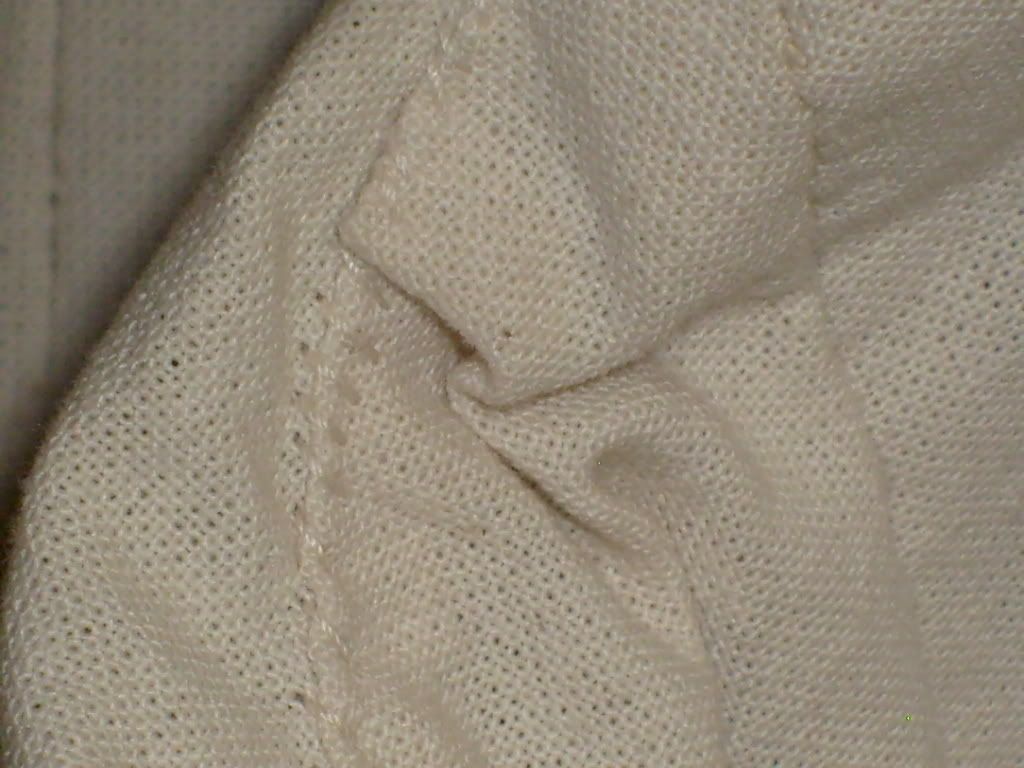
Top Stitching along the parameter.
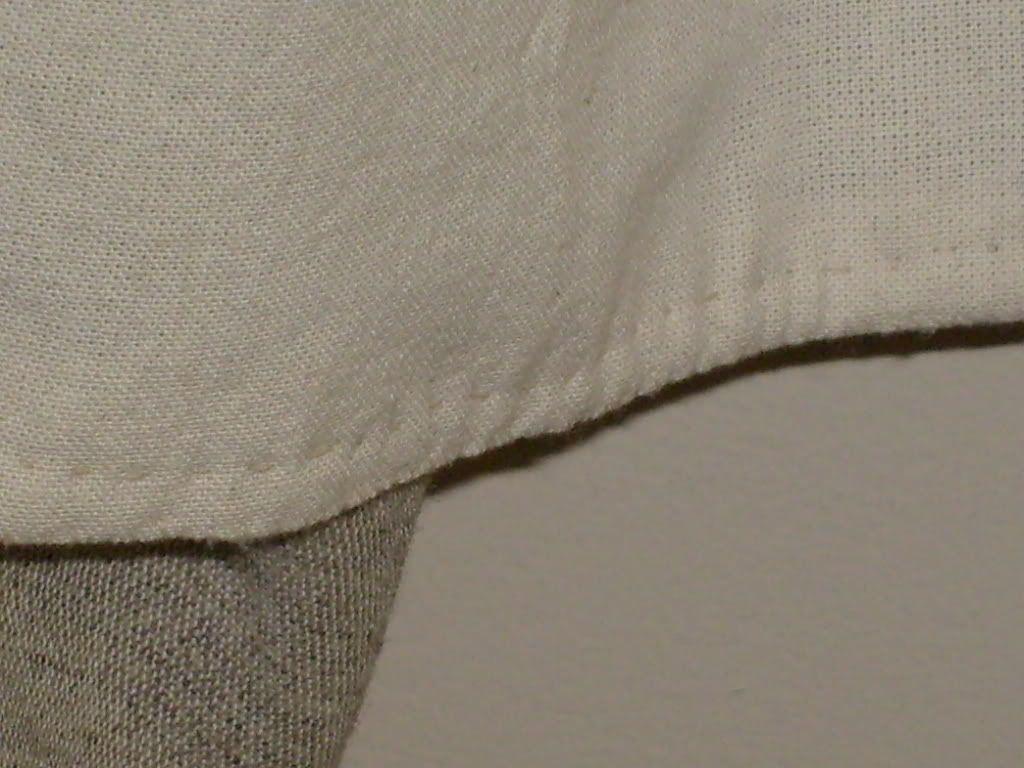
Cuff construction.
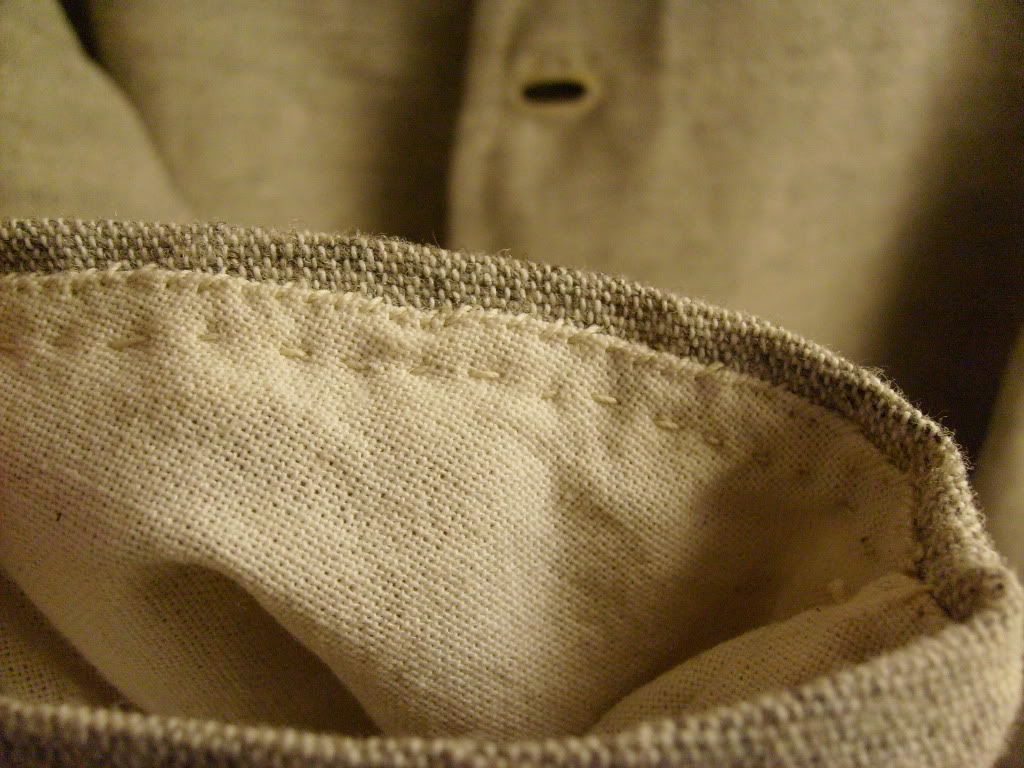
- Pride and Joy
Buttonholes, where to start. These simple little things required some of my most intense attention and concentration. I estimated I spent an hour and a half to two hours per buttonhole. I made some of the smallest stitches possible with OUTSTANDING results. Four buttonholes and 4 button attachments later I had a finished Jacket.

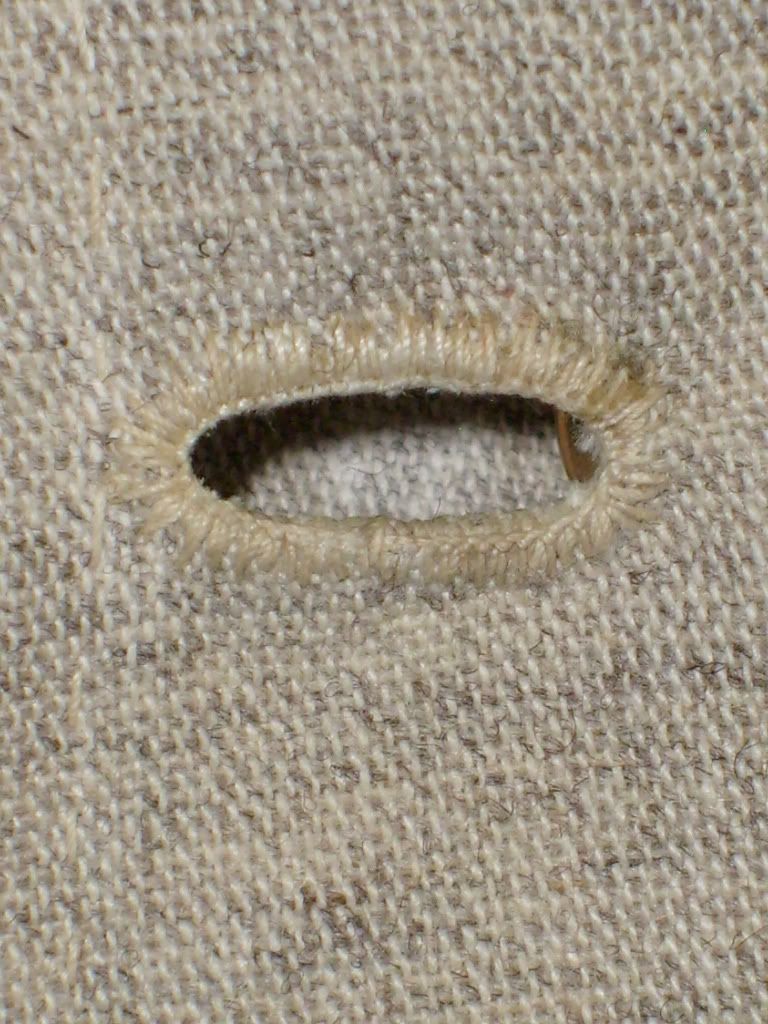
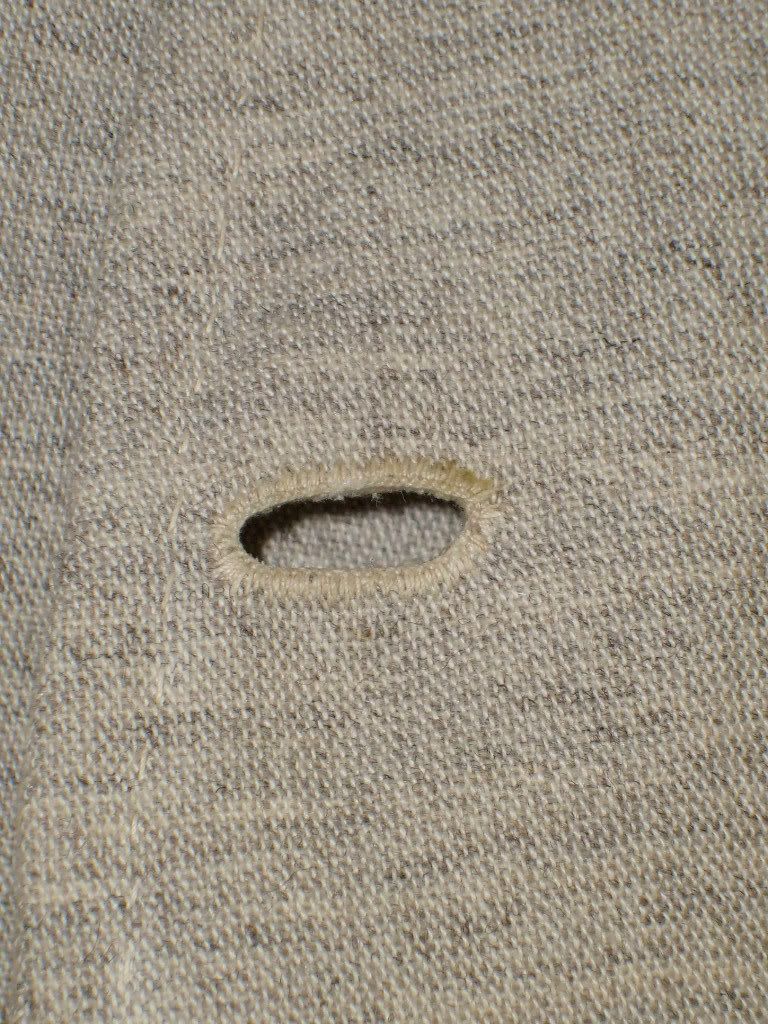
-The Finished Product

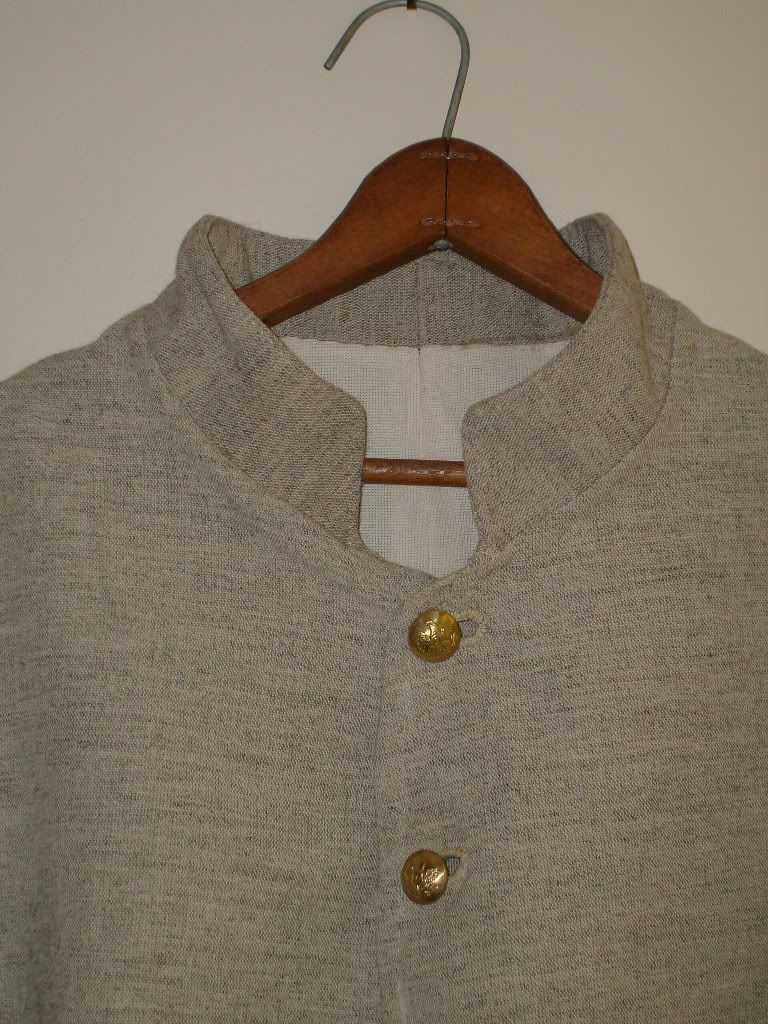

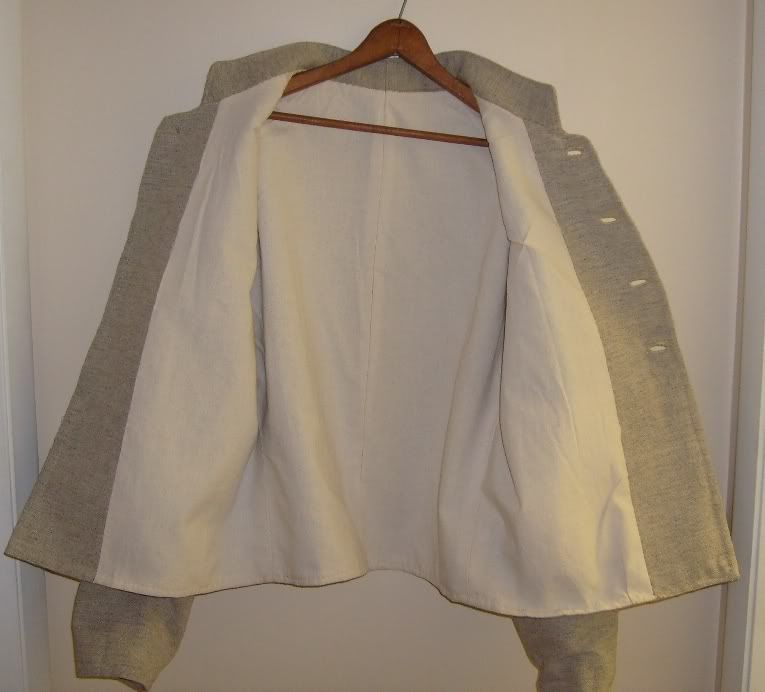
-Mistakes
This sections is for images of my mistakes. Laugh, scoff, or whatever floats your boat. We all make mistakes, its all part of learning.
My attempt at the darning stitch to close the hole I cut too large.
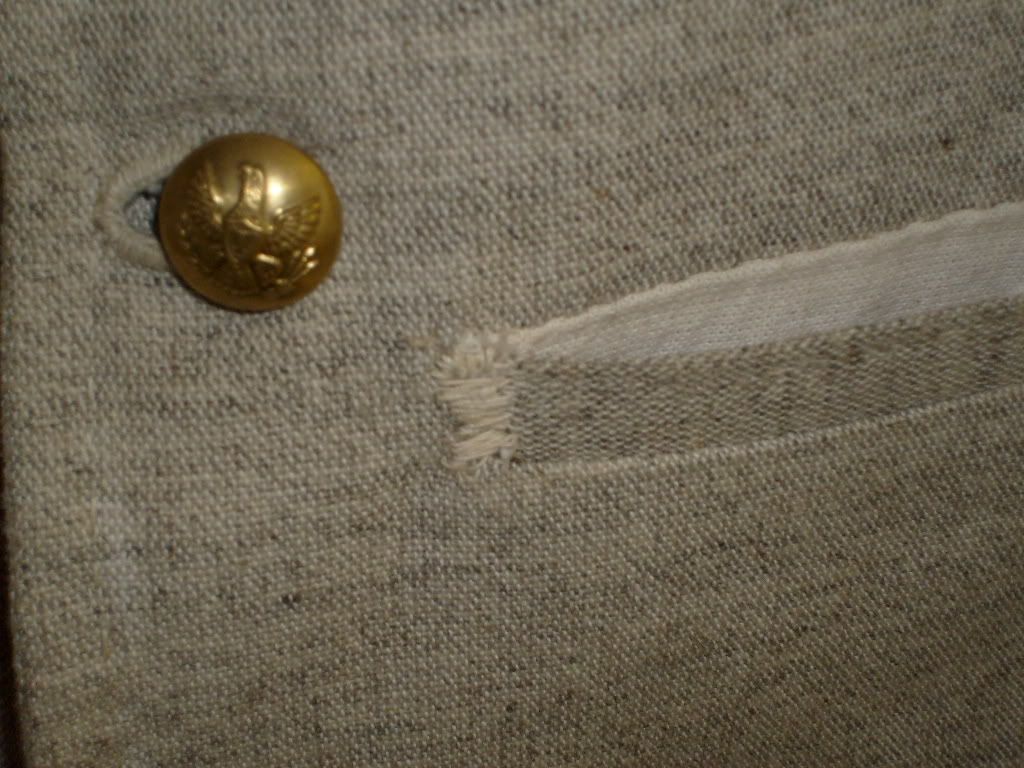
My poorly done grommet hole. I play to redo this one when I get some free time.

Seam allowance not matching up.
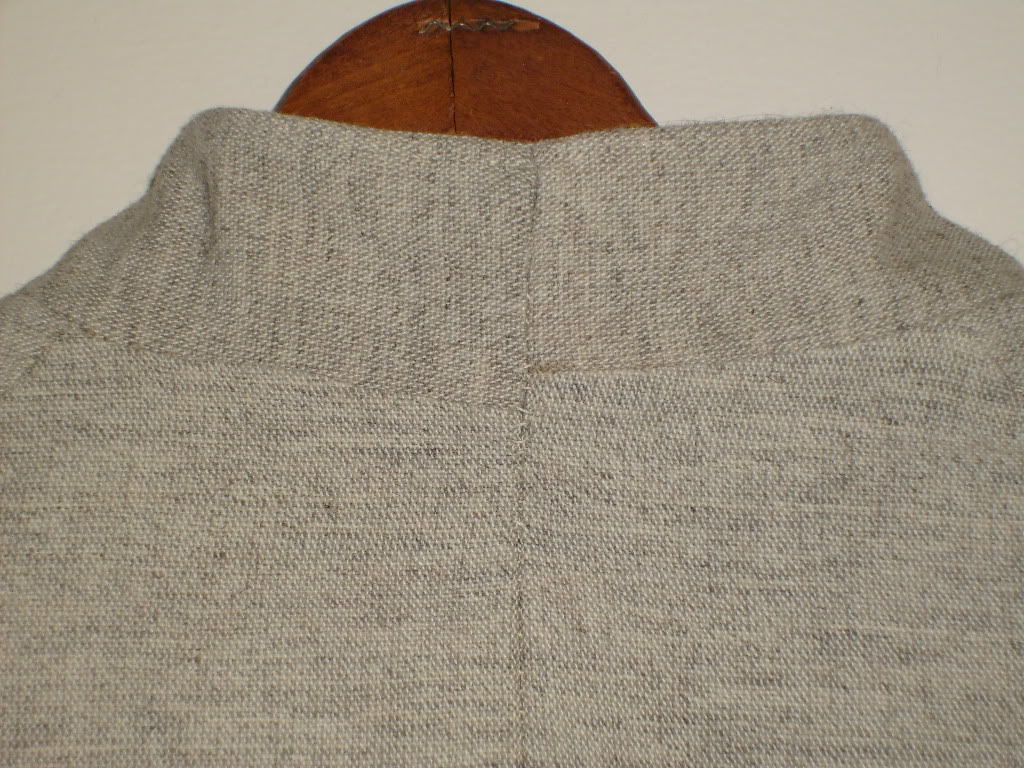
Close up of seam allowance.
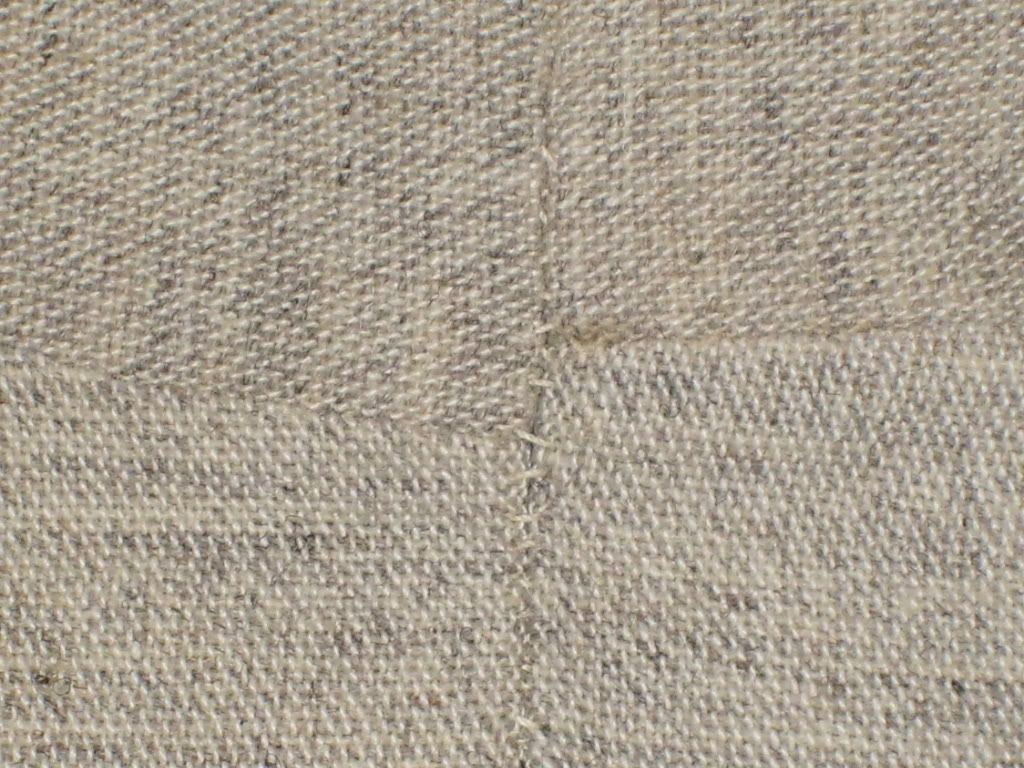
-Conclusion
Three months after I started I now have a finished jacket. I must say I have come to realize many things. The workmanship that people put into authentic reproductions far outweighs the cost. $200 - $400 for products is cheap considering what work goes into the production of these garments we all wear. I have new respect for anyone that produces any type of accurate coat or jacket in quantity.
I must say this project has been an excellent learning experience. It may not be something I'll do over again, at least in the near future. I want to personally thank Mr Wambaugh for taking the time to talk about his product. It shows true passion for what you sell if you take the time to answer every question about your products. My hats off to you Dan.
I hope you enjoyed reading and seeing what I have done this summer.
God Bless
This project was the Very first major sewing project I have undertook. Many mistakes may have been made. I have no claim that I am a seamster . Most of what I have learned has been through trial and error. The main reason for this article is to show that even a person with minimal sewing skills can complete an authentic looking garment. I apologize for not taking pictures during construction of the garment. I did not have a digital camera or access to one at that time.
- Introduction
We all have done it, a “Summer Project”. As the heat and humidity of summer drive us indoors, we seek new ways to entertain ourselves,(or torture). Nestled inside my air conditioned fortress, I undertook an interesting project. This is the story of one such project.
- The Beginning
Research-
Looking through the droves of posts here on the AC, I came to a conclusion. I wanted to stay away from the look that the “Richmond Depot” jacket had. As I attend mostly western reenactments, I feel that a RD jacket had been vastly overdone out west. I always was interested in the “Columbus Depot” and other deep south depots.
Looking through the approved vendors list and came across Wambaugh, White and Company. I was drawn to the Ross County four button CS jacket kit. I was interested in the history and application of this jacket.
The kit can be found at;
http://www.wwandcompany.com/4buttonkit.html
Purchasing -
Making sure that funding was available, I called Mr Wambaugh. I spoke to him for a good 30 minutes about the history behind the jacket and its construction. After I was satisfied with my choice, I placed my order. Within two or three day I had the package arrive at my doorstep. Being that I was traveling out of town I couldn't start the project then. I checked the box and laid everything out to get a scope of the task before me.
The fabric was an interesting to say the least. With no wrong or right side it was a challenge to know what side I needed to use. Pins are a wonderful thing to mark what side your using. I was impressed with the quality of the workmanship in the fabric kudos to Ben Tart.
- Measure Twice, Cut Once
The first step of the project was the pocket and pocket welt. I found this to be the most difficult part of the entire project. Either because of my lack of skill or not understanding what the directions implied. We all know the old saying “Measure twice, Cut once”. For me its “Measure Four times, Cut Once, Still get it wrong”. This was probably one of the biggest mistakes I made. I cut the pocket welt opening too large. This almost sidelined the project for good. Discouraged at my mistake I moved on. The next few steps went much easier.
-Smooth Sailing
The following steps I sailed right through with no difficulty. Running stitch and back stitch mostly. How bad is it when you have to look online to see how to do a running stitch? I will raise my hand to that one, better to admit your shortcomings that to be ignorant to them.
- Speed bump
At this point, I was a few weeks into the project. I had most of the facing pieces sewn together. Spending a few hours a week doing the project. School work took up most of my time. I came to a difficult and potentially important choice around this time. Do I follow the directions exactly, or do I follow what I feel like I should like it. The question was, do I finish the collar as specified with an overcast stitch? I do not know exactly how to describe the way I attached the two collar pieces. Best way is to say it is attached like how the facing pieces are attached to one another. Looking back I probably should have followed the directions but, THIS IS MY COAT. I used a construction method that was available at the time and both ways look pretty much the same.
This images shows the construction of the collar.


Few weeks had gone by before I finished attaching the lining to the body. At this point the jacket was taking shape. I could start to see the finished product. Sleeve construction went fast and without any major troubles. Attachment of the sleeves was a bit tricky. With a bit of help from a more experienced, I was able to attach the sleeves. At this point I had an almost finished project. I still had buttonholes to do.
Sleeve lining attachment to the body.

Top Stitching along the parameter.

Cuff construction.

- Pride and Joy
Buttonholes, where to start. These simple little things required some of my most intense attention and concentration. I estimated I spent an hour and a half to two hours per buttonhole. I made some of the smallest stitches possible with OUTSTANDING results. Four buttonholes and 4 button attachments later I had a finished Jacket.



-The Finished Product




-Mistakes
This sections is for images of my mistakes. Laugh, scoff, or whatever floats your boat. We all make mistakes, its all part of learning.
My attempt at the darning stitch to close the hole I cut too large.

My poorly done grommet hole. I play to redo this one when I get some free time.

Seam allowance not matching up.

Close up of seam allowance.

-Conclusion
Three months after I started I now have a finished jacket. I must say I have come to realize many things. The workmanship that people put into authentic reproductions far outweighs the cost. $200 - $400 for products is cheap considering what work goes into the production of these garments we all wear. I have new respect for anyone that produces any type of accurate coat or jacket in quantity.
I must say this project has been an excellent learning experience. It may not be something I'll do over again, at least in the near future. I want to personally thank Mr Wambaugh for taking the time to talk about his product. It shows true passion for what you sell if you take the time to answer every question about your products. My hats off to you Dan.
I hope you enjoyed reading and seeing what I have done this summer.
God Bless




Comment